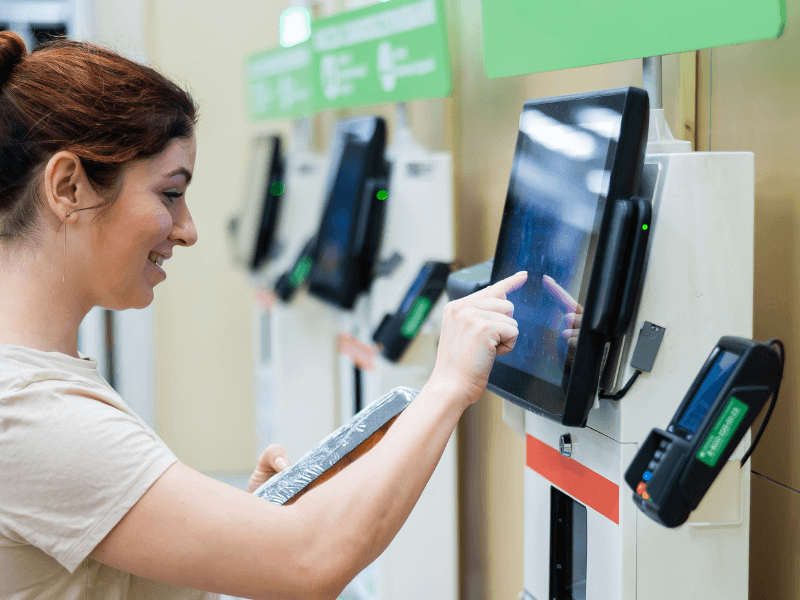In today’s retail sector, effectively integrating customer feedback into operational strategies is crucial for survival and growth. As online shopping reshapes what consumers expect, brick-and-mortar stores are pressed to use every resource available to enrich their in-store experience and overall retail operations. A key resource in this endeavor is the customers themselves. After all, the old adage is that the customer is always right.
Advancements in smart retail technology now make it possible to actively gather and analyze customer feedback, providing vital insights that help retailers not just meet but exceed, customer expectations—thereby boosting loyalty and increasing revenue.
But how can this feedback be used to improve retail operations?
Let’s explore practical strategies for using customer insights to transform the retail experience.
Understanding Customer Feedback Mechanisms
Before diving into strategies to improve retail operations, it’s essential to understand the mechanisms through which customer feedback can be collected and utilized effectively. Modern retail technology offers several tools that provide real-time insights into customer behavior and preferences:
Smart Checkout Kiosks

Smart checkout kiosks streamline the purchasing process and serve as a critical data collection point within the retail environment. These kiosks facilitate a self-service checkout option, allowing customers to complete purchases independently, leading to reduced wait times and a more efficient shopping experience. They are uniquely positioned to offer insights into consumer decision-making at the point of sale by tracking choices and changes in consumers’ purchase decisions, such as additions or removals of items last minute.
Self-checkout scales also collect detailed data on user interactions, preferences, and purchase patterns, monitoring how users navigate the checkout process, the difficulties they encounter, and which features they engage with the most.
Additionally, these kiosks can prompt customers for feedback immediately after the transaction, integrating rating systems or quick surveys to gauge satisfaction levels and collect direct feedback on the shopping experience.
Smart Retail Carts

Smart carts enhance the shopping experience by integrating the convenience of online shopping into the physical store environment. These carts are equipped with technology that tracks which items are added or removed, providing real-time insights into shopper decisions and preferences. As customers shop, the carts collect data on shopping patterns, such as dwell times in certain store areas, frequently paired products, and even abandoned items. This data is analyzed to tailor the shopping experience more closely to individual needs, suggesting products based on past purchases or currently selected items.
Surveys
Surveys, tailored to gather specific insights directly after a shopping experience, increase the likelihood of receiving genuine and actionable feedback. This direct approach allows retailers to quickly adapt and respond to customer needs and preferences, enhancing overall retail operations and fostering greater customer loyalty.
Analyzing Feedback for Actionable Insights
Once feedback is collected, the next step is to analyze this data to extract actionable insights. This involves:
Identifying Patterns
When it comes to enhancing customer experience, it’s crucial to identify recurring patterns within the feedback received. These patterns may unveil underlying issues or opportunities for improvement across various aspects of the business. For instance, customers might consistently complain about difficulties in finding products, suggesting a problem with product placement or store layout. Similarly, repeated mentions of staff behavior could indicate a need for training or policy adjustments. By recognizing these common themes, businesses can pinpoint areas that require attention and develop targeted solutions to address them effectively.
Segmenting Feedback

Understanding that not all customers are the same is paramount in interpreting feedback effectively. By segmenting feedback based on demographics, buying behavior, and customer value, businesses can gain deeper insights into the diverse needs and preferences of their customer base. For instance, younger shoppers might value technological convenience, while older customers may prioritize personalized service. By segmenting feedback, businesses can tailor their strategies and initiatives to cater to the specific preferences and expectations of each group, ultimately enhancing customer satisfaction and loyalty.
Prioritizing Changes
Not all feedback requires immediate action, and resources are finite. Therefore, it’s essential to prioritize changes based on their potential impact on customer satisfaction and retail operations. Some feedback may address minor inconveniences that, while valid, may not significantly affect overall satisfaction or revenue. On the other hand, certain issues may have a profound impact on customer sentiment and loyalty, as well as on the bottom line. By evaluating feedback through this lens, businesses can allocate resources more effectively, focusing on implementing changes that will yield the greatest returns in terms of enhancing the customer experience and driving business success.
Implementing Retail Operations Changes Based on Feedback

Quick Wins
Implementing changes based on customer feedback often begins with identifying and executing “quick wins.” These are small yet impactful adjustments that can be swiftly implemented to enhance the customer experience. Quick wins are characterized by their ability to provide immediate benefits without requiring extensive time or resources. For instance, a retail store might quickly rearrange products to improve accessibility or update signage for easier navigation within the store. These changes are noticeable to customers and demonstrate a commitment to addressing their concerns promptly, thereby fostering positive perceptions of the brand.
Strategic Overhauls
In addition to quick wins, addressing more significant issues often necessitates strategic overhauls. These comprehensive initiatives involve reevaluating and restructuring fundamental aspects of the business to address systemic challenges or capitalize on emerging opportunities. Strategic overhauls may include initiatives such as retraining staff to improve customer interactions, redesigning store layouts to optimize traffic flow and product visibility, or integrating digital touchpoints into the physical store environment to enhance convenience and engagement. While these overhauls may require more time, resources, and planning, they have the potential to generate substantial long-term benefits by fundamentally transforming the customer experience and positioning the business for sustained success in a competitive market.
Measuring the Impact of Changes on Retail Operations

After implementing changes, it’s crucial to measure their impact. Start by gathering direct feedback through follow-up surveys, focusing on recent modifications. This provides firsthand insights into customer reactions and helps identify any remaining areas for improvement.
Additionally, analyze sales data before and after changes to measure their impact on product performance. Look for noticeable improvements in purchase volumes or transaction values, correlating changes with implemented adjustments.
Finally, track customer retention rates to assess the long-term impact of changes on loyalty. An increase indicates positive resonance with customers, while a decline suggests the need for further refinement. This comprehensive approach ensures a thorough evaluation of the effectiveness of implemented changes across different aspects of retail operations.
Continuous Improvement: Show Customers They Are Valued
We all know that retail is a constantly changing industry. To stay ahead, businesses need to continuously adapt based on up-to-date feedback. By committing to ongoing improvement, businesses show their commitment to delivering outstanding experiences for their customers. Every adjustment, regardless of its size, represents a sincere effort to listen, adapt, and prioritize customer satisfaction.
Want to take the next step in enhancing your retail operations?
Explore how Shekel’s smart retail scales can transform your business. Get in touch with us today to discover more and start a journey of continuous improvement together.




